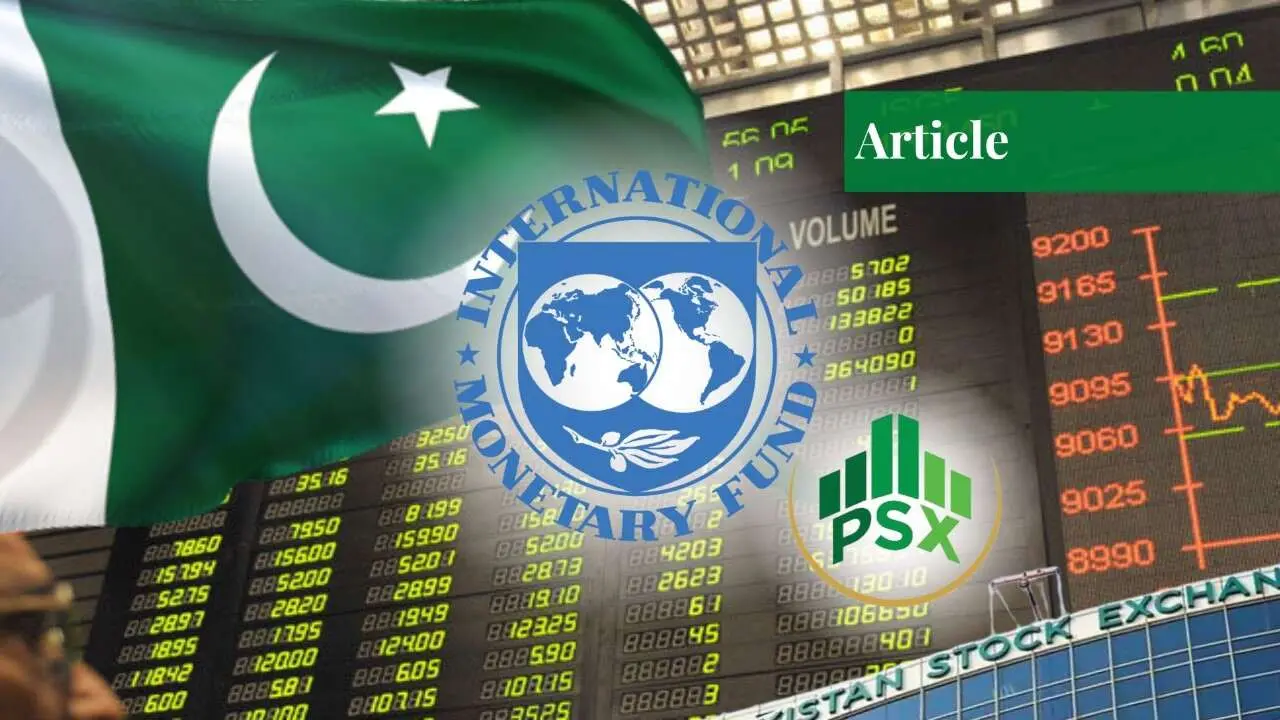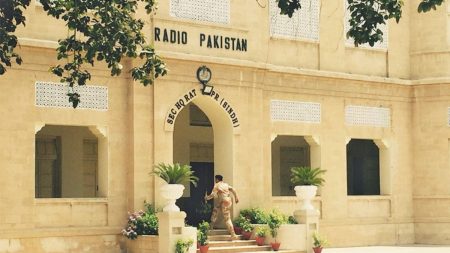Islamabad: The latest report from the International Monetary Fund (IMF) on Pakistan’s economic outlook for the fiscal year 2025 suggests that the country’s growth will likely remain stable, with some adjustments.
The IMF has revised its earlier projection for GDP growth in fiscal year 2025, lowering it by 0.6 percentage points from its October forecast.
The new growth estimate for Pakistan stands at 2.6%, compared to 2.5% for fiscal year 2024. However, the outlook for 2026 shows a recovery, with growth expected to rise to 3.6%.
The report also notes a continued easing of inflation in Pakistan in line with global trends.
This decline in inflation is expected to be driven by favorable base effects, reduced commodity and food price pressures, and the delayed impact of tighter monetary policies in various regions, including Pakistan.
Interest rates are expected to remain elevated for an extended period, which will increase borrowing costs for countries like Pakistan that are grappling with high debt levels.
Consequently, Pakistan will face challenges in financing its debt at sustainable rates.
The IMF emphasizes that the country needs to focus on fiscal consolidation efforts, particularly reducing public spending on subsidies and enhancing tax collection systems.
These efforts will be crucial to managing the country’s debt effectively.
The report also highlights a growing divergence between oil-exporting and oil-importing economies in the Middle East and North Africa (MENA) region.
Oil-exporting countries have been able to navigate the complex global environment with the help of diversification strategies, despite a slowdown in oil production due to OPEC+ production cuts.
GDP Growth
The IMF has revised Pakistan’s GDP growth projection for fiscal year 2025 down slightly by 0.6 percentage points from its earlier October forecast.
The new projection is a 2.6% growth rate, which is still an improvement over the estimated 2.5% growth for fiscal year 2024. Growth for fiscal year 2026 is expected to increase to 3.6%.
Inflation
Inflation is projected to ease over the next few years, in line with global trends.
This decline is driven by favorable base effects, reduced commodity and food price pressures, and the lagged impact of tighter monetary policy in some regions, including Pakistan.
Monetary Policy and Debt
Interest rates are expected to remain elevated for an extended period, which could impact borrowing costs for countries like Pakistan, which has high debt levels.
Pakistan, along with other highly indebted countries, will need to focus on fiscal consolidation to manage its debt sustainably.
This includes controlling public spending, such as subsidies, and improving tax collection.
While many oil-exporters are benefiting from diversification efforts, oil-importing countries, including Pakistan, are facing challenges from global trade tensions, conflicts, and slower-than-expected reforms.
Trade Tariffs
The IMF notes that newly imposed tariffs on some countries, including Pakistan, could have an impact on trade, particularly in markets like the United States.
Fiscal Consolidation Efforts
Fiscal consolidation is expected to continue, but the IMF suggests that Pakistan will need to accelerate these efforts. This includes reducing subsidies and strengthening tax administration.
Agricultural and Economic Recovery
Pakistan has seen stronger agricultural production and a recovery following the floods of 2023, which have contributed to its economic stability.
On the other hand, oil-importing economies, including Pakistan, face a more difficult economic landscape, influenced by global trade tensions, regional conflicts, and slower-than-expected structural reforms.
Read More: IMF Forecasts 3.2% GDP Growth for Pakistan in FY25
A significant point raised in the IMF’s report is the impact of recent tariffs imposed on several countries, including Pakistan.
Looking forward, the IMF suggests that Pakistan will need to accelerate fiscal consolidation in order to manage its rising debt and borrowing costs.
This will involve containing spending, particularly on subsidies, and improving revenue mobilization through tax reforms and stronger tax administration.
Policymakers will also need to manage risks associated with state-owned enterprises and public-private partnerships, which could pose contingent liabilities.
The IMF’s Executive Board is scheduled to discuss Pakistan’s program on May 9, 2025, which could provide further guidance on the country’s economic trajectory.
In the meantime, Pakistan has shown some resilience, with stronger agricultural production and a recovery from the 2023 floods helping to stabilize the economy.
Also Read: ADB Projects 2.8% GDP Growth for Pakistan
Overall, while Pakistan faces a range of economic challenges, the IMF’s report paints a picture of a country slowly recovering and adapting to a difficult global and regional environment, with a need for continued fiscal discipline and structural reforms to ensure long-term growth and stability.









